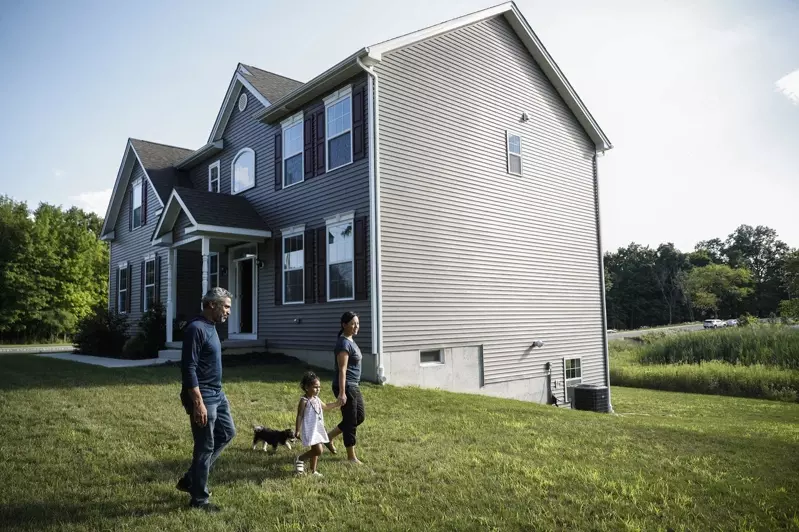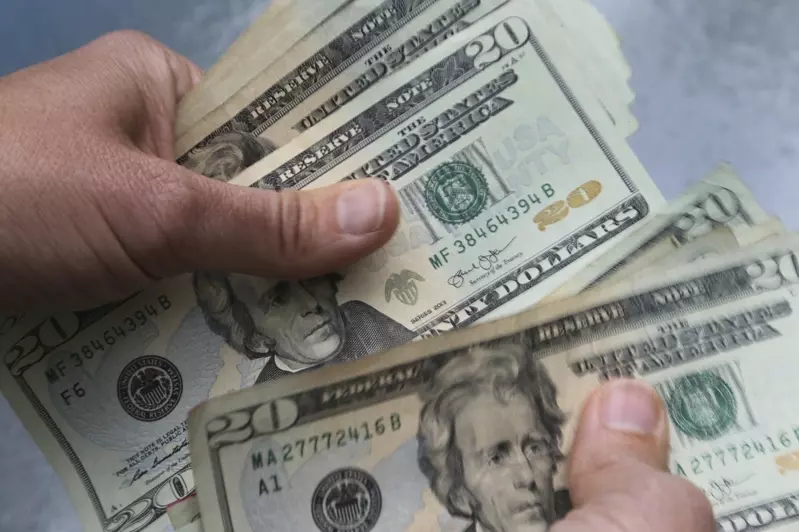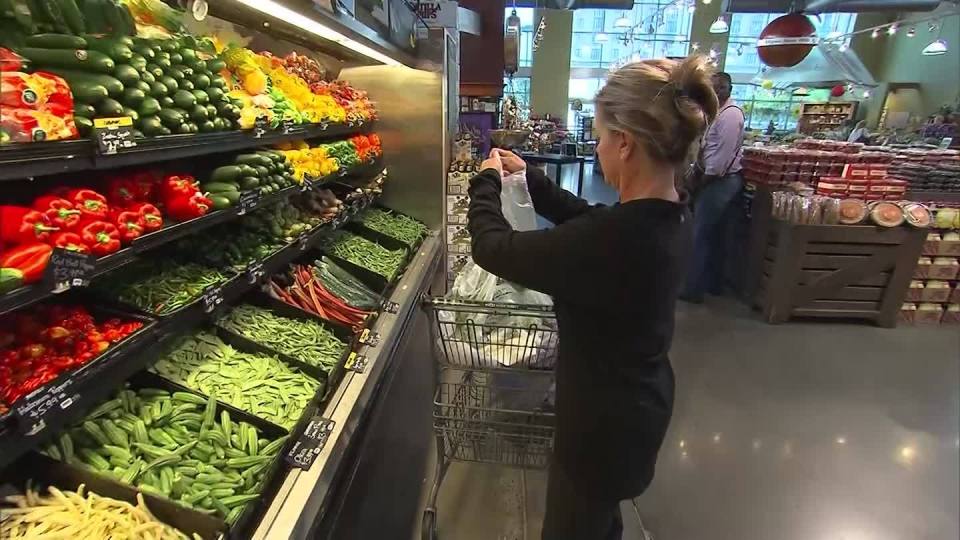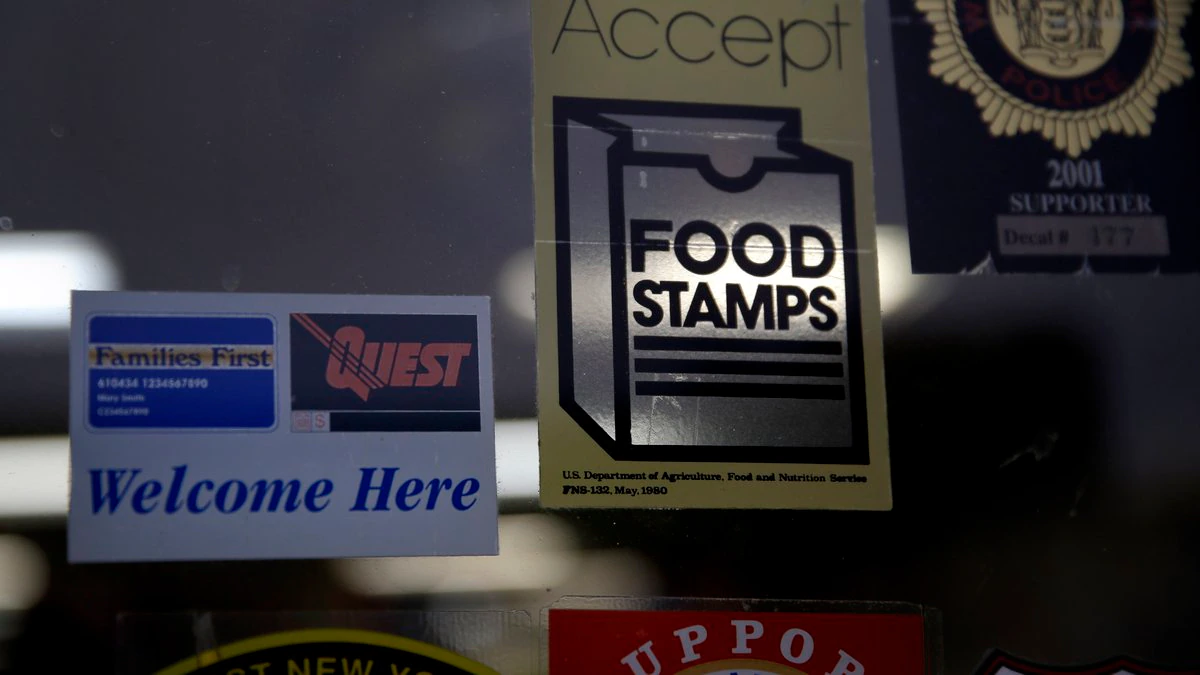
再婚男事件 华人敲警钟 急问信托遗嘱
世界新闻网
4/24/2022

纽约律师冉燕飞所在的明理律师事务所,每月举办两次到三次免费讲座、普及信托和遗嘱的知识。她说,在平时,听讲座者在20人至50人之间。今年3月湾区Y先生在病妻离世九天后火速再婚、并与亡妻父母闹上法庭的新闻引爆网络之后,她举办网络讲座听众猛增10倍达到500多人。「3月22日的一次讲座,听众达到600多人。」她说,湾区这个家庭故事给美国华人一个了解信托和遗嘱的契机,也给很多人敲响警钟。

她说,湾区再婚男让很多华人觉得教训深刻,D女士及其父母都对人性险恶估计不足。D女士单方面期待丈夫Y某会善待自己的父母,因此没有给父母提供必要的法律保障;而D某的父母一生都为孩子着想,并没有为自己考虑,致使女儿去世后顿失住所。「若能防患于未然,可以少走很多弯路。」

临终信托 应保障父母
冉燕飞说,D女士的失误是过于相信丈夫不会亏待自己的父母,没有从法律上为父母考虑,提前做出安排。她说,加州法律没有要求子女要照顾父母,因此忽略父母的晚年生活。她在临终前签署了一个信托(trust)文档,但没有将父母作为受益人。

她说,D女士完全可以在信托里规定一定的比率和金额给父母,让父母在她病逝之后获得保障。即使是在信托中让丈夫做受托人,如果丈夫没有履行受托义务,至少「父母可以提告」保护自己应有的权益,不至于沦落到向网友求助的地步。
她说,D女士的父母已经70多岁。如果D女士能给父母留下10万美元,折合人民币65万元左右。「父母回国后用这些钱在西安生活,应该不错。」

如果D女士没有生病,也可以买个人寿保险,就算买个最便宜的term,将父母列为指定受益人,每月花不了多少钱。若是D女士去世,父母一下子可以领到几十万元,足够父母晚年的花费。
预立遗嘱 安排遗产分配
若是没有设立信托,也没有指定父母为受益人的人寿保险,D女士也可以立下遗嘱。在遗嘱里,设立者可以做出遗产安排,告知自己的遗产如何分配,给父母和孩子多少比率。「但是,D女士没有这样做,死后就无法运行。」
冉燕飞说,在绝大部分情况下,已婚夫妻双方既是信托设立人,也是信托管理人和受益人。当夫妻年龄大了,一般都由成年子女管理。由夫妻和子女管理的家庭信托一般都不收管理费。
但是,如果夫妻无法管理,而且孩子也不能管理,他们就只能委托信托公司、银行、财务顾问、会计师、律师等专业人士管理,但是专业人士管理信托需要收管理费。
D女士父母也有考虑不周的地方。她说,多数老一辈华人父母都为孩子着想,没有一点自我,这既是优点也是缺点。在D女士去世前,女儿问父母要不要钱,父母回答「不要」。「他们也许一厢情愿认为女儿走后,女婿会像以前一样照顾他们。」父母总认为,女儿一定会比他们后走,没想到女儿先走。「如果他们早有考虑,就不会如此被动。」
独生子女 可设联合帐户
纽约华人律师邱慧英从事遗产规画法律事务已有25年。她表示,D女士为独生女,没有为父母安排,而将他们的后半生交给女婿,「就是错误所在」。她说,在美国,子女结婚后,与父母就是两家人。如果在买房子的时候加上父母的名字,若是子女去世,对方也赶不走父母。「假如父母出钱了,子女更应该加上父母的名字。」如果父母是外国人,可能有税务上的缺点。若是住在纽约,要缴纳外国人拥有房地产的税及纽约州的将近10%的非纽约州居民的税。「女儿死后,房子出售要再加约10%房地产税。」

她一般不建议人们开联合帐户,也不建议亲人共同拥有房产。不过,考虑到D女士的这个情况,可以与父母开一个联合帐户。她说,如果夫妻没有安排,一旦有人去世,财产就归对方和孩子所有。「若是本人有钱,且父母还在,可以与父母开一个联合帐户。」但是,一般人怕伤夫妻感情,不愿这样做。
她说,独生子女都要考虑到父母养老的资金,无论健康与否,都应该将父母写进将来财产的分配和使用的信托里。例如,如果子女先死,给父母多少钱、在房子里可住多久。如果父母先走,那就给子女或配偶。这样的弹性处理,不管子女是否比父母先走,都是不要因为父母先走而更改信托。
冉燕飞说,许多华人忌讳谈论死亡和遗产。他们对自己比较乐观,认为自己现在活得好好的,怎么会突然死亡,离死亡还早着呢。她说,华人都是等到最后一分钟,才匆忙安排后事。
遗产规画 不是富人专利
她建议,人们应该对遗产提前做出规画,因为没有人能够预测明天和不幸谁先来到。如果不了解什么是遗产规画,应该咨询律师,而不是道听涂说,贸然做决定,给自己留下悔恨和遗憾。如果不愿咨询律师,也要学习有关的知识。她说,遗产规画对许多华人来说都是一个「挑战」。

她说,有的接近百岁的夫妻也不愿意做遗嘱。例如,她最近有个案子就是这样。先生今年98岁,太太比先生小一岁,都躺在养老院的病床上。「我受子女委托为他们立遗嘱。」她说,先生比较明白,表示同意,但是太太却说,「我还没走,做什么遗嘱」。
也有的人想写遗嘱,不是请律师,而是自己写。结果,他们的遗嘱不符合要求。例如,一位华裔老人在新冠爆发后赶快自己写了一份遗嘱。「他打印出遗嘱,自己签好字,交给我。」她说,按照纽约州的法律规定,遗嘱签字时需要两名见证人。「他没有见证人,这份遗嘱不算数。」
许多人认为,只有富人才要设立信托,没有几百万财产不需要做。湾区再婚男的故事传开后,还有文章说,资产达到300万元以上的才要设立信托,300万元以下的不需要,理由是「信托要收管理费」。她说,从内容看,这些作者本人应该是在中国,并不了解美国的实际情况。
她说,有的人有几千万元资产,也是自己管理。自己管理信托,不需要交费。大部分中产阶级都是自己管理信托。「若把信托交给孩子管理,孩子也不会收费。」若是找不到管理人,要请信托管理公司、银行管理,他们才要交费用,费用每年在1%至2%之间,有的可能更低。
Email: OaktonAcademy@gmail.com
https://www.oaktonacademy.com/
生前信托 避免认证麻烦
邱慧英说,夫妻俩设立了信托后,需要指定运行人。如果担心配偶不会按照合约运行,可派信任的家人、朋友做运行人。她说,如果客人没有指派的人,坚持要聘用律师作为运行人,律师必须当面告诉客人:律师做运行人可以,但要收双份的费用。如果客人同意,签署同意书,律师才能做。这是在一个完全没有可信任人的情况下,是一个极端的做法。

有的设立人去世后,其子女不同意律师做运行人,要求自己做运行人。「法官多半会驳回子女的要求,要尊重设立人的意见,让律师做运行人。」
冉燕飞说,信托既能处理身后的遗产,也可帮助避免生前认证,「人活着时应该做」。生前信托最大的好处是避免两个法院认证(Probate)。如果设有信托,设立人去世后,继承人不需要去法院认证,省去许多麻烦。但是,如果只有遗嘱,没有信托,继承人就要去法院做遗嘱认证。「这个程序不仅费时间、花钱、而且没有隐私。」
她说,有人生前如出现意识不清,不能做出决策,也需要做「生前认证」。例如,一名中国留学生住在纽约的公寓二楼上,却不幸摔下一楼,成为植物人。他的父母都在中国的工厂里工作,收入不高。父母得到消息后,急忙从中国飞来纽约,处理孩子的事务。
Healthcare Certification and ESL Programs
留学生的父母以为孩子的银行卡里还有钱,就没有带钱过来。「为了孩子留学,父母给孩子的美国帐户打进十多万美元。」但是,父母有卡却取不到钱,因为没有银行卡的密码。父母需要去法院认证,才能管理孩子的帐户。
她说,父母请律师去法院做认证。「我申请孩子的妈妈担任帐户的监护人,拥有管理帐户的权限,但是法官不批。」她说,法官拒批的理由是,他的妈妈不懂英文,无法承担这个任务。
「如果要担任监护人,妈妈要去学习与监护人有关的课程,还要不时向法院递交一些报告。不懂英文的妈妈显然无法完成法院要求的任务。」最后,法官指定一名律师担任监护人,管理孩子的银行存款。「三年时间,帐户里的钱花完了,孩子也走了。」
这件事对人们来说就是一个教训。为了预防意外,人们最好提前做好预防,如设立信托或签署授权委托书(Power of Attorney),就可以避免这个结果。但是,许多华人意识不到这个问题。
华人缺少意识 常留遗憾
邱慧英说,西方社会设立信托很普遍,但华人往往没有认识到信托的重要性。他们认为自己没有多少财产,也没有资格做信托。而最大的错误是,即便知道了,也拖着不办,最后造成终身的遗憾,且无法补救。
邱慧英说,如果有人去世,且生前写有遗嘱,其家人就要委托律师去法院做遗嘱认证。法官认证就是为了保护大众利益。法官审核死者的继承人、债权人、资产等,没有争议的话,先偿还所有人的债务,余下的分给继承人。
她说,凡是标有所有者姓名的遗产都要去法院认证,「逃不掉的」。这些遗产包括房产、银行帐户、投资帐户等。而那些没有姓名的遗产也需要认证,遗产包括黄金、珠宝、骨董、字画等遗产。
她说,美国是由各州组成的联邦,各州有其法律。因此各州的继承法都不一样,但是差别不大。即使没有写遗嘱或信托,各州法律都有一份标准遗嘱,财产将按照标准遗嘱分配。
若是按照纽约州的法律,若是配偶去世,另一配偶先拿5万元,剩余的部分配偶拿一半,子女平分另一半。这样会造成夫妻双方一方去世后,几乎一半的财产会分给子女,因此许多人无法接受这样的分配。她说,如果不想如此,就要写份信托或遗嘱,将来遗产照自己的意思分配。

她说,办理遗嘱认证很花时间。纽约市的认证法官一个区只有一名,而曼哈顿和布鲁克林因为人口较多,有两名,一名法官来处理全区的所有死者的财产,认证不可能快。
邱慧英说,如果已经设立了信托,并把所有的财产都放进信托,继承人不需要聘请律师办理认证。她说,如果有人看不懂这些法律条文,可以聘请专业律师帮助解释信托中的财产如何分配及其手续。

她说,她在办理信托时,都要教客户,将来百年以后运行遗产分配的手续。如果将来的运行人还是没有把握,那么就应该预约一个懂得信托运行的律师面谈,请律师当面阅读并解释信托内容及运行方法。「如果这名律师懂得信托,就会认为这很容易。」
不过,客户千万不要把信托交给「要慢慢研究」的律师。因为法律规定,律师要按照钟点收费,除非是一些非常熟悉的案件,大概知道会花多少时间,都有固定的收费,或是未知的结果。例如,打民事官司,可以采取百分比收取官司成功的费用。
她说,律师按照时间收费。即使他们原本不懂这方面的法律,若是花钱花时间去学习、研究,他们也可以合理地收取这方面的费用。「因此,聘请熟悉业务的律师,可以节省律师的学习费用。」

拿白卡去世后房产会被政府收走?专家教这招可避免
世界新闻网
01/26/2022

安乐居长久以来一直致力于为长者提供各种相关福利及资讯。日前特别邀请旧金山残障人士及长者服务部申请部门主任杨锦全讲解,华人长者如何通过设立信托,以防过世后,房产沦入政府之手。
杨锦全表示,州政府会向往生白卡用户的遗产受益人,追讨回生前住的某些医疗服务费用。但华人长者可以通过设立信托、让财产不进入认证程序,避免房屋被没收或索赔。
杨锦全说,他所在的部门,提供一站式服务,长者需要申请白卡、粮食券或家居护理的,都可帮忙。申请白卡要看收入和财产,个人月收入不能超过1468元,夫妇月收入不能超过1983元。申请白卡财产的规定是,个人不超过2000元,夫妇不能超过3000元。白卡福利允许用户可以拥有一栋自住房子(无论几层)和一辆车。

如果长者的退休户口内有资金的,计算申请白卡的财产总额时,有细致的规定。例如,一对夫妇,先生要申请白卡,但太太退休户口有数万元,这不计入财产总额的。若先生自己的退休户口,每月取一笔钱出来,要计入收入,但户口剩余资金,不计入资产。
加州还有配偶贫困条款(spousal impoverishment protections),如果配偶符合相关条件,证明需要连续30天的专业疗养院或护理员医疗水准,申请白卡时的收入资格限制,可以增加到每月不超过3260元,个人资产限制可以达到13万3800元。
由于部分经费来自联邦政府医疗补助计划,联邦政府要求州政府向往生的白卡用户的遗产受益人,追讨回生前的某些医疗服务费用。加州规定的范围是,追讨限于在55岁或以上入住疗养院和使用居家及社区为主服务的民众。55岁以下的受益人,如他们是在一家疗养设施、中级护理设施或其他医疗设施「永久住院」者,以及在给予听证通知和机会后决定他们是无法合理预期会出院及回家者。
州政府只能追讨通过遗产认证法庭(Probate Court)确认的遗产。如果白卡用户的财产没有达到确认、认证的阶段,就不用索赔。比如说,老人可以做个简单的信托,写明万一发生意外,财产如何分配,这意味着,房产分配后不会到达认证阶段,也就不会被索赔。
另外,申请粮食券的条件为,个人月收入不能超过2128元,夫妇月收入不能超过2874元。而60岁以上长者或残障人士申请的条件为,扣除租金或房贷之后的净收入。如长者每月社安金为2000元,但月租要付1000元,其净收入为1000元,即符合申请条件。粮食券个人最高每月可获234元,夫妇最高430元。如果用粮食券去加州某些农夫市场购物,有一定的优惠,1元可以当做1.3甚至2元购物。
需要知道有关长者更多资讯,可致电(866)526-9622,或者上网站onlok.org/PACE查找。

美国人平均年薪多少?华顿商学院教授:学生普遍高估
世界新闻网
01/21/2022

一般美国人平均年薪大概有多少?宾州大学华顿商学院(Wharton School at the University of Pennsylvania)法律研究暨商业道德教授妮娜‧史托明格尔(Nina Strohminger)指出,拿这个问题询问学生,结果有25%说美国人平均年薪应有超过六位数价码,一名学生甚至回答「80万元」,但实际数字为4万5000元左右。对于学生的理解与真实状况出现落差,她在推特发文写道:「真不知道该如何看待。」
史托明格尔19日在推特发文写道,华顿商学院学生对于一般美国民众年薪多少普遍高估,获得网友热烈回荡,成为推特热门话题。史托明格尔推文获得留言超过9600则,21万余网友按赞。哈佛大学(Harvard University)经济教授史蒂芬妮‧斯坦契瓦(Stefanie Stantcheva)便回应表示:「低收入民众觉得别人全是低收入,富人认为其他人也都很有钱。」
柏克莱加大(University of California-Berkeley)劳工研究与教育中心(Center for Labor Research and Education)主任贾克布斯(Ken Jacobs)接受华盛顿邮报专访时说,估算一般民众财务状况时,许多人通常以接近自身经验的角度思考,而不是基于现实。
贾克布斯:「年薪20万或10万元被视为普通薪资,这个想法满奇怪的,因为如此数字高估满多。」
华盛顿邮报报导,华顿商学院每学年学费约8万元,而学校座落的费城西部地区,当地居民平均年收入约3万4000元。
根据社会安全局(Social Security Administration,SSA)统计,去年美国民众平均年薪为5万3383元,年薪中位数则为3万4612元。
劳工部统计显示,2021年第四季美国劳工周薪中位数为1010元,换算大约等同年薪5万2520元。
华盛顿邮报分析,中产阶级(middle-class)在美国应该如何定义,近年来受到舆论热议,绝大多数民众自认属于中产阶级,但许多民众却说不出中产阶级的如何界定。
华盛顿邮报2017年报导指出,中产阶级家庭年收入为3万5000元至12万2500元之间。报导中写道,年薪10万元仍被列入中产阶级,但已经属于非常极端,「75%美国家庭年收入低于这个水平」。
「公职免学贷」计划修改 7万人受惠、减免近50亿元
世界新闻网
01/20/2022

免除部分美国人背负的高额学生贷款是拜登总统的主要政策之一;教育部20日宣布,「公职服务学贷减免」计划(Public Service Forgiveness Loan)修改后,约7万人的近50亿元学贷可望免除,最终将有55万人受益。
公职服务学贷减免计划是2007年提出,宗旨是吸引学生担任教师、警察、消防员、军人等公共服务工作,只要工作期间定期偿还,学贷十年后即可免除;但计划自运行以来,几乎没有任何人的学贷被联邦政府豁免。
教育部去年10月修改了免除学贷的标准,当时全国130万人试图通过这一计划豁免学贷;教育部表示,标准修改后,初期即有2万2000人可立即免掉学贷,2万7000人只要证明从事符合要求的工作也可免除,预计7万人将有资格免掉近50亿元的学贷。
教育部副部长卡瓦尔(James Kvaal)表示:「在公共部门供职十年的人,包括教师、护士、急救人员和军人等许多公职人员,都能得到我们的支持和依赖公职服务学贷减免计划,尤其是在疫情时期。如今拜登政府履职一年,对他们的支持将继续。」
拜登总统面临要求他利用行政权豁免4300万人联邦学贷的强烈呼声,他竞选时承诺每人豁免1万元学贷,如今却表示学贷豁免权属于国会;拜登19日在执政周年的记者会上被问到如何取消学贷时没有回答,但拜登政府将疫情期间暂停偿还学贷的期限延至5月1日。
学贷豁免计划是鼓励大学毕业生不受私营部门的高薪诱惑,而到公共部门就职,作为交换条件,联邦政府十年后将免除他们的学贷。
学贷减免计划貌似简单但运行复杂,对豁免资格的要求严格,多数人因为借贷的种类不符合规定而不能参加;许多人是10年后申请豁免时才发现不符资格,但又没有其他选择,只好重新制定偿还计划。
拜登上任以来,教育部已豁免67万5000人约150亿元的学贷,均为通过扩大运行各项债务豁免计划;教育部修改的「公职服务贷款减免」计划,是扩大运行学贷豁免计划的一部分。
You Might Finally Qualify for Student Loan Forgiveness
New Public Service Loan Forgiveness rules mean hundreds of thousands of borrowers could have their loans forgiven faster than expected.
By Mike Winters
10/07/2021

For years, the Public Service Loan Forgiveness (PSLF) program has struggled to actually forgive student loan debt. But yesterday, the Biden administration announced changes that will immediately erase student loan debt for roughly 22,000 borrowers—and will help hundreds of thousands more reach loan forgiveness sooner than expected. Here’s how the changes might affect your student loans.
Eased requirements for the PSLF program
In 2007, Congress created the federal student loan forgiveness program to encourage people to work in federal and local governments, public schools, and the military. In exchange for about 10 years of full-time service (or 120 student loan payments), the program forgives the remaining balance on federal loans—or at least, that’s how it’s supposed to work. However, according to a 2019 Government Accountability Office (GAO) report, this happens rarely, as it found only 1% of applicants were deemed eligible for student loan forgiveness.
Part of the problem is that the program has only been available to borrowers who have Direct Loans, a specific type of student loan managed by the federal government. One option has been to consolidate existing student loans into a Direct Loan, but that just set back borrowers even further, as previous payments for other loans don’t count towards the 120 payments needed to forgive the outstanding balance.
To that end, the Education Department is now offering a limited waiver that “allows all payments by student borrowers to count toward PSLF, regardless of loan program or payment plan.” All borrowers who currently have FFEL, Perkins, or other non-Direct Loans, can get this benefit of this limited waiver if they apply to consolidate into the Direct Loan program and submit a PSLF form by Oct. 31, 2022. Additionally, members of the military will be able to count deferment and forbearance while on active duty toward the loan forgiveness. The Education Department estimates this will help 550,000 student loan borrowers reach loan forgiveness sooner than expected.
How to apply for the PSLF waiver
The Education Department says it will be contacting borrowers and encouraging them to consolidate their loans or apply for the program by Oct. 31, 2022. To apply for the waiver, start by visiting StudentAid.gov/PSLFWaiver.
SNAP benefits increasing statewide
By Johan Sheridan
10/01/2021

ALBANY, N.Y. (NEWS10) — New Yorkers in the Supplemental Nutrition Assistance Program (SNAP) will reportedly see an increase of about $36 per family member starting next month.
According to the office of Gov. Kathy Hochul, all New Yorkers receiving SNAP benefits will get more money because of a federal cost adjustment. The new regular monthly amount attempts to better provide low-income individuals and families access to healthy foods.
“Now more than ever, New Yorkers are seeing their money for food stretched thinner and thinner, which in turn forces them into making food choices that are cheaper, but far less nutritious,” Hochul said in a statement. “This long-overdue increase in benefits will give households across New York State the purchasing power to buy nutritious foods, which in turn will ultimately result in healthier outcomes.”
In New York, the maximum benefit for a family of four will grow from $680 to $835. Nearly 3 million households throughout the state were in SNAP in July.
Hochul’s office says the boost in benefits brings in over $1.4 billion in federal funding to the state. According to federal estimates, every dollar of SNAP benefits spent results in about $1.59 in economic activity.
Last year, the USDA reevaluated the plan used to calculate SNAP benefits, resulting in the first cost adjustment in more than 45 years. The new plan also altered how eligibility is determined and the level of benefits received. The shift is meant to reflect changing dynamics in food sales and shoppers’ priorities over five decades.
The USDA evaluated current food prices, typically American diets, and nutritional value. The agency concluded that the cost of healthy, practical, and affordable food is 21% higher than SNAP benefits offered. Hochul’s office points out that studies consistently show that food benefit levels are too low to provide for a realistic, healthy diet, even with households adding funds to the pot.
USDA is permanently boosting food stamp benefits
By ASHRAF KHALIL and JOSH BOAK,
Associated Press

WASHINGTON — President Joe Biden’s administration has approved a significant and permanent increase in the levels of food aid available to needy families — the largest single increase in the program’s history.
Starting in October, average benefits for food stamps — officially known as the Supplemental Nutrition Assistance Program, or SNAP — will rise more than 25 percent above pre-pandemic levels. The increased assistance will be available indefinitely to all 42 million SNAP beneficiaries.
The increase coincides with the end of a 15 percent boost in SNAP benefits that was ordered as a pandemic protection measure. That benefit expires at the end of September.
Agriculture Secretary Tom Vilsack said that with the change, the U.S. “will do a better job of providing healthy food for low-income families.”
The aid boost is being packaged a major revision to the USDA’s Thrifty Food Plan, which estimates the cost to purchase groceries for a family of four and guides the way the government calculates benefits. In practical terms, the average monthly per-person benefits for qualified recipients will rise from $121 to $157.
The increase is projected to cost an additional $20 billion per year, but it won’t have to be approved by Congress. A farm law passed in 2018 by the then-GOP led Congress and signed by former President Donald Trump already directed the department to reassess the Thrifty Food Plan.
“Whether you’re a Republican or a Democrat, I think there’s a shared understanding of the importance of this program,” Vilsack said in a conference call with reporters.
The increase is part of a multi-pronged Biden administration effort to strengthen the country’s social safety net. Poverty and food security activists maintain that longstanding inadequacies were laid bare by the COVID-19 pandemic, presenting an opportunity to make generational improvements that reach beyond the current public health crisis.
Activists say the previous levels of pre-pandemic SNAP assistance simply weren’t enough, forcing many households to choose cheaper, less nutritious options or simply go hungry as the funds ran low toward the end of the month.
Vilsack said the increased funding will allow families to “be able to make healthy choices” all month long.
The changes are not directly connected to the COVID-19 pandemic, but Vilsack said the crisis helped underscore the importance of the food assistance program.
“A lot of people who thought they’d never take part in the SNAP program found themselves in need,” he said. “The pandemic sort of shocked people out of the belief that this was a program for someone else.”
Federal Communications Commission
Emergency Broadband Benefit

The Emergency Broadband Benefit is an FCC program to help families and households struggling to afford internet service during the COVID-19 pandemic. This new benefit will connect eligible households to jobs, critical healthcare services, virtual classrooms, and so much more.
About the Emergency Broadband Benefit
The Emergency Broadband Benefit will provide a discount of up to $50 per month towards broadband service for eligible households and up to $75 per month for households on qualifying Tribal lands. Eligible households can also receive a one-time discount of up to $100 to purchase a laptop, desktop computer, or tablet from participating providers if they contribute more than $10 and less than $50 toward the purchase price.
The Emergency Broadband Benefit is limited to one monthly service discount and one device discount per household.
Who Is Eligible for the Emergency Broadband Benefit Program?
A household is eligible if a member of the household meets one of the criteria below:
- Has an income that is at or below 135% of the Federal Poverty Guidelines or participates in certain assistance programs, such as SNAP, Medicaid, or Lifeline;
- Approved to receive benefits under the free and reduced-price school lunch program or the school breakfast program, including through the USDA Community Eligibility Provision in the 2019-2020 or 2020-2021 school year;
- Received a Federal Pell Grant during the current award year;
- Experienced a substantial loss of income due to job loss or furlough since February 29, 2020 and the household had a total income in 2020 at or below $99,000 for single filers and $198,000 for joint filers; or
- Meets the eligibility criteria for a participating provider’s existing low-income or COVID-19 program.
How to Apply
The online application for the Emergency Broadband Benefit Program is experiencing high demand. We appreciate your patience as we actively work to resolve any connectivity issues users may encounter.
Apply Now
There are three ways for eligible households to apply:
- Contact your preferred participating broadband provider directly to learn about their application process.
- Go to GetEmergencyBroadband.org to apply online and to find participating providers near you.
- Call 833-511-0311 for a mail-in application, and return it along with copies of documents showing proof of eligibility to:
Emergency Broadband Support Center
P.O. Box 7081
London, KY 40742
After receiving an eligibility determination, households can contact their preferred service provider to select an Emergency Broadband Benefit eligible service plan.
Get More Consumer Information
Check out the Broadband Benefit Consumer FAQ for more information about the benefit.
Which Broadband Providers Are Participating in the Emergency Broadband Benefit?
Various broadband providers, including those offering landline and wireless broadband, are participating in the Emergency Broadband Benefit. Find broadband service providers offering the Emergency Broadband Benefit in your state or territory.
Broadband providers can find more information about how to participate here.
Source: https://www.fcc.gov/broadbandbenefit
Evictions During COVID-19: Landlords’ Rights and Options When Tenants Can’t Pay Rent
Tips, resources, and advice for landlords whose tenants aren’t able to pay the rent due to the coronavirus outbreak.
By Ann O’Connell, Attorney
11/01/2020
Many renters are facing financial challenges resulting from coronavirus-related business shut-downs, furloughs, layoffs, and stay-at-home orders. The longer this crisis goes on, the more likely it is that many will not be able to pay their rent. When renters default on rent, landlords suffer, and might not be able to meet their own financial obligations, such as making the mortgage payments on the rental property.
Here are some suggestions about how landlords can mitigate the financial impact of tenant defaults during the COVID-19 outbreak.
Terminations and Evictions
Under normal circumstances, when tenants don’t pay rent, landlords have the option of terminating the tenancy (by serving the tenant with either a pay rent or quit notice or an unconditional quit notice, depending on the applicable laws). When tenants don’t pay the rent or move out by the deadline given in the notice, landlords can then file an eviction lawsuit to have the tenants physically removed from the rental.
However, health and safety concerns due to COVID-19 have led many states, cities, counties, and courts to place moratoriums on evictions. The scope of these temporary bans on evictions varies greatly: some have banned any and all action relating to evictions, while others simply postpone hearings on evictions until the court can arrange a hearing via telephone or video.
If you are a landlord in an area with an eviction moratorium, you might still be able to file eviction papers with the court, but your case might not be heard for a while. However, even if there are no bans in place, evicting tenants who can’t pay the rent due to the coronavirus crisis probably shouldn’t be your first recourse. Aside from optics (you don’t want to get a reputation as the ruthless landlord who booted tenants out of their home in the middle of a stay-at-home order), if you remove tenants right now, you’re going to be faced with having to disinfect the rental, advertise the rental, screen new prospective tenants (of which there might be very few), sign a new lease or rental agreement, and get the new tenants moved in—all while taking measures to abide by emergency guidelines and health and safety measures.
Consider the following options instead.
Evaluate Your Personal Financial Situation
Take a moment to evaluate your own finances. As dire as it sounds, it might be time to take stock of what could happen in a worst-case scenario. Most landlords have likely considered the situation where tenants don’t pay rent, as this can happen at any time. But there’s no denying that this is a different situation—what will happen if your tenants can’t pay for a long time, and your options for finding new (paying) tenants are slim?
Your assessment of how this worst-case scenario will affect your ability to pay your mortgage (if any) and your personal bills will inform how you respond when your tenants can’t pay their rent.
- If your financial situation looks grim: If your ability to pay the mortgage on your rental property hinges on month-to-month rental income, you should take actions to prevent your own default This includes options discussed below, such as contacting your lender and proactively seeking arrangements with tenants that allow them to make at least partial payments.
- If you have a few months’ reserves: If your personal reserves or financial position won’t feel too much of a pinch if tenants aren’t able to pay rent for a while, you still might have to make some compromises to retain good tenants. If you have tenants who have previously been reliable and are simply finding it hard to make ends meet currently, do what you can to take some pressure off them—see the discussion below about working out a temporary solution with tenants.
Try to Work Out a Temporary Solution With Tenants
Depending on how desperately you need to receive income from your rental, you have a few options for working with tenants who aren’t able to pay rent because of COVID-19. Consider the following possible arrangements.
- Forgive rent. If your situation allows for it, you could waive rent for a month, with an agreement to revisit the payment arrangement on a certain date. A landlord in Bakersfield recently did this for his tenants.
- Postpone rent. You could offer to postpone rent payments for a month, with an agreement that it will be repaid. Your repayment arrangement could state that the rent owed could be spread out over time, paid all at once, or paid when (if) a stimulus check
- Reduce rent. If you can, consider dropping the rent temporarily to a level that enables you to meet your obligations but forgoes profit for the time being. For example, if you normally collect $1200 a month, but your mortgage is $900 a month, you could temporarily drop rent to $900 to make sure you at least don’t get in trouble with your lender.
Before deciding to make any of these adjustments, try talking to your tenants. Ask them straight out what they think they can make work. If you’re able to accommodate their suggestions, chances are higher that they will do everything they can to hold up their end of the bargain. Be sure to put any agreements in writing, preferably as an addendum to your current lease or rental agreement that includes all details of the arrangement.
Look for Outside Assistance
Even if you think you can float a month or two without rental income, you still might want to consider taking some measures now to protect your position in the event that the coronavirus crisis lasts longer than your cushion can handle. If you’re already feeling the pinch, take these actions immediately.
Attend to Your Mortgage
At this point in the COVID-19 crisis, most private lenders are willing to work with borrowers to ensure that they don’t lose their homes. Call your lender directly and ask what steps it is taking to assist borrowers who can’t meet their mortgage obligations due to the coronavirus pandemic.
- If your loan is owned by Fannie Mae or Freddie Mac, you might be able to delay making payments for a certain period of time without incurring late fees or getting hit with a credit score penalty.
- Look into your options under the Coronavirus Aid, Relief, and Economic Security Act.
- The Federal Housing Administration (FHA) has put in place a foreclosure moratorium for single family homeowners with FHA-insured mortgages.
- Visit your state’s website to find out if the state is offering assistance to homeowners. For example, New York has announced a delay of mortgage payments for 90 days. Many other states are postponing any foreclosure actions indefinitely. Find your state’s website at State and Government on the Net.

Look Into Property Tax Breaks
Some states and counties are extending the deadline for paying property taxes, or cancelling late fees and interest. Check your county’s tax assessor’s website to see if this is an option where your property is located.
Seek a Loan
Consider seeking a loan from family, friends, or private lenders. The U.S. Small Business Administration might be another source of assistance—its disaster loan assistance web page has a wealth of information. You can also contact your regular bank or credit union and inquire about what assistance it can offer.
Research Options for Your Renters
Some areas are beginning to offer rent vouchers or emergency funds to renters in need. For example, the Pennsylvania Apartment Association is collecting donations for funds to give to renters who can’t pay rent. Currently, renters’ needs are getting a lot more attention in the press than landlords’ needs, and there are already a lot more resources being made available for renters. It’s in your best interest to research these options and bring them to your renters’ attention—do what you can to help your tenants pay you.
Landlords are getting squeezed between tenants and lenders
By ANNE D’INNOCENZIO

NEW YORK (AP) — When it comes to sympathetic figures, landlords aren’t exactly at the top of the list. But they, too, have fallen on hard times, demonstrating how the coronavirus outbreak spares almost no one.
Take Shad Elia, who owns 24 single-family apartment units in the Boston area. He says government stimulus benefits allowed his hard-hit tenants to continue to pay the rent. But now that the aid has expired, with Congress unlikely to pass a new package before Election Day, they are falling behind.
Heading into a New England winter, Elia is worried about such expenses as heat and snowplowing in addition to the regular year-round costs, like fixing appliances and leaky faucets.
Elia wonders how much longer his lenders will cut him slack.
“We still have a mortgage. We still have expenses on these properties,” he said. “But there comes a point where we will exhaust whatever reserves we have. At some point, we will fall behind on our payments. They can’t expect landlords to provide subsidized housing.”
The stakes are particularly high for small landlords, whether they own commercial properties, such as storefronts, or residential properties such as apartments. Many are borrowing money from relatives or dipping into their personal savings to meet their mortgage payments.
The big residential and commercial landlords have more options. For instance, the nation’s biggest mall owner, Simon Property Group, is in talks to buy J.C. Penney, a move that would prevent the department store chain from going under and causing Simon to lose one of its biggest tenants. At the same time, Simon is suing the Gap for $107 million in back rent.
Michael Hamilton, a Los Angeles-based real estate partner at the law firm O’Melveny & Myers, said he expects to see more retail and other commercial landlords going to court to collect back rent as they get squeezed between lenders and tenants.
Residential landlords are also fighting back against a Trump administration eviction moratorium that protects certain tenants through the end of 2020. At least 26 lawsuits have been filed by property owners around the country in places such as Tennessee, Georgia and Ohio, many of them claiming the moratorium unfairly strains landlords’ finances and violates their rights.
Apartment dwellers and other residential tenants in the U.S. owe roughly $25 billion in back rent, and that will reach nearly $70 billion by year’s end, according to an estimate in August by Moody’s Analytics.

An estimated 30 million to 40 million people in the U.S. could be at risk of eviction in the next several months, according to an August report by the Aspen Institute, a nonprofit organization.
Jessica Elizabeth Michelle, 37, a single mother with a 7-month-old baby, represents a growing number of renters who are afraid of being homeless once the moratorium on evictions ends.
The San Francisco resident saw her income of $6,000 a month as an event planner evaporate when COVID-19 hit. Supplemental aid from the federal government and the city helped her pay her monthly rent of $2,400 through September. But all that has dried up, except for the unemployment checks that total less than $2,000 a month.
For her October rent, she handed $1,000 to her landlord. She said her landlord has been supportive but has made it clear he has bills to pay, too.
“I never had an issue of paying rent up until now. I cry all night long. It’s terrifying,” Michelle said. “I don’t know what to do. My career was ripped out from under me. It’s gotten to the point of where it’s like, ‘Am I going to be homeless?’ I have no idea.’”
Some landlords are trying to work with their commercial or residential tenants, giving them a break on the rent or more flexible lease terms. But the crisis is costing them.
Analytics firm Trepp, which tracks a type of real estate loan taken out by owners of commercial properties such as offices, apartments, hotels and shopping centers, found that hotels have a nearly 23% rate of delinquency, or 30 days overdue, on their loans, while the retail industry has a 14.9% delinquency rate as of August.
The apartment rental market has so far navigated the crisis well, with a delinquency rate of 3%, according to Trepp. That’s in part because of the eviction moratorium, along with extra unemployment benefits from Washington that have since expired.
“There are bad actors, but the majority of landlords are struggling and are trying to work with a bad situation,” said Andreanecia M. Morris, executive director of HousingNOLA, a public-private partnership that pushes for more affordable housing in the New Orleans area.
Morris, who works with both landlords and tenants, said that government money wasn’t adequate to help tenants pay their rent, particularly in expensive cities. She is calling for comprehensive rental assistance.
She fears that residential landlords will see their properties foreclosed on next year, and the holdings will be bought by big corporations, which are not as invested in the neighborhoods.
Gary Zaremba, who owns and and manages 350 apartment units spread out over 100 buildings in Dayton, Ohio, said he has been working with struggling tenants — many of them hourly workers in restaurants and stores — and directs them to social service agencies for additional help.
But he is nervous about what’s next, especially with winter approaching and the prospect of restaurants shutting down and putting his tenants out of work. He has a small mortgage on the buildings he owns but still has to pay property taxes and fix things like broken windows or leaky plumbing.
“As a landlord, I have to navigate a global pandemic on my own,” Zaremba said, “and it’s confusing.”










